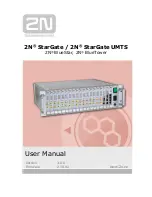
428
A
PPENDIX
A: C
ONNE
X
TIONS
H.323 G
ATEWAY
Connection
Considerations
As soon as an end-to-end connection has been set up, all three networks
(local LAN, WAN, and remote LAN) are ready to pass voice packets. The
NBX Business and Basic Telephones use their DSP to convert spoken
words into digital voice packets. The voice packets are transferred across
the Ethernet to the local H.323 gateway. The gateway strips off the
Ethernet frames, compresses the voice, and encapsulates it within UDP
packets which are delivered to the router, again via the Ethernet. The UDP
packets are placed on the WAN for IP delivery to a remote H.323
gateway. The remote gateway undoes the process and sends the
decompressed voice to an extension.
Connection considerations apply to two areas:
■
Overall Connectivity
■
Quality of Service
Overall Connectivity
An end-to-end NBX H.323 connection consists of a succession of Physical
Connections and Logical Connections, both local and external.
Physical Connections
An NBX H.323 gateway has few
physical
connections. An installer can
add an H.323 gateway to an existing NBX system by creating one physical
connection on the LAN that links a network interface card in an operating
system to a hub or to a switch. The same connection also gives the H.323
gateway a direct connection to every other device on the near-end LAN.
Those devices include any NBX Business or Basic Telephone, the Call
Processor, and the firewall or router.
Alternatively, you can use a second NIC in the gateway system to provide
a separate connection between the H.323 gateway and the IP router.
Logical Connections
Locally, every device on an NBX LAN has the same physical access to the
local network traffic as any other device. Consequently, addresses control
connections because devices can only read information that is addressed
to them. This makes addressing, and managing addresses, a key concern
for logical continuity.
Logical continuity concerns extend throughout a network connection
because the identity of a frame (or packet) and its destination determine
where it goes, how it is handled, and what happens to it.
Summary of Contents for NBX 100
Page 14: ......
Page 18: ...18 ABOUT THIS GUIDE ...
Page 26: ...26 CHAPTER 1 INTRODUCTION ...
Page 138: ...138 CHAPTER 2 DIAL PLAN ...
Page 322: ...322 CHAPTER 3 DEVICE CONFIGURATION ...
Page 328: ...328 CHAPTER 4 USER CONFIGURATION ...
Page 412: ...412 CHAPTER 10 TROUBLESHOOTING ...
Page 458: ...458 APPENDIX B ISDN COMPLETION CAUSE CODES ...
Page 480: ...480 GLOSSARY ...
Page 492: ...492 INDEX ...
















































